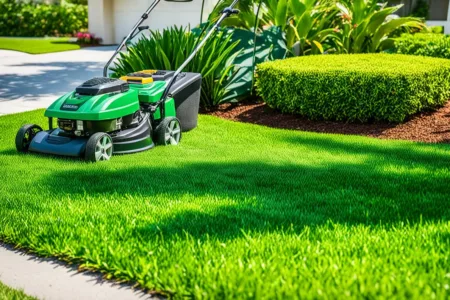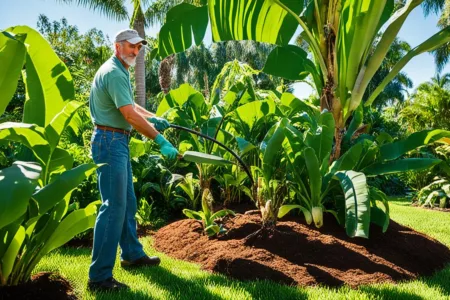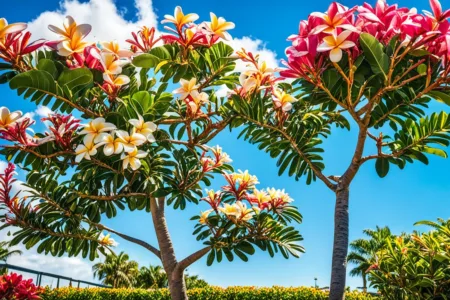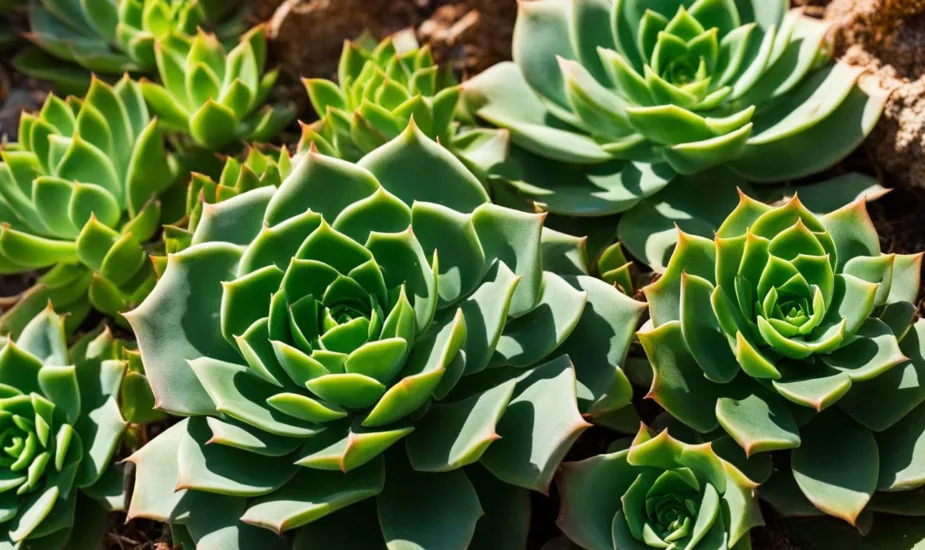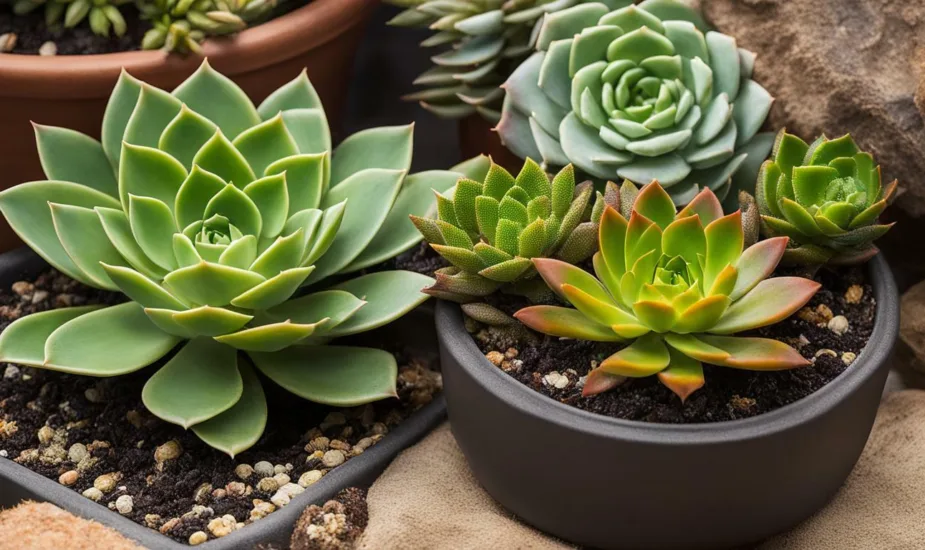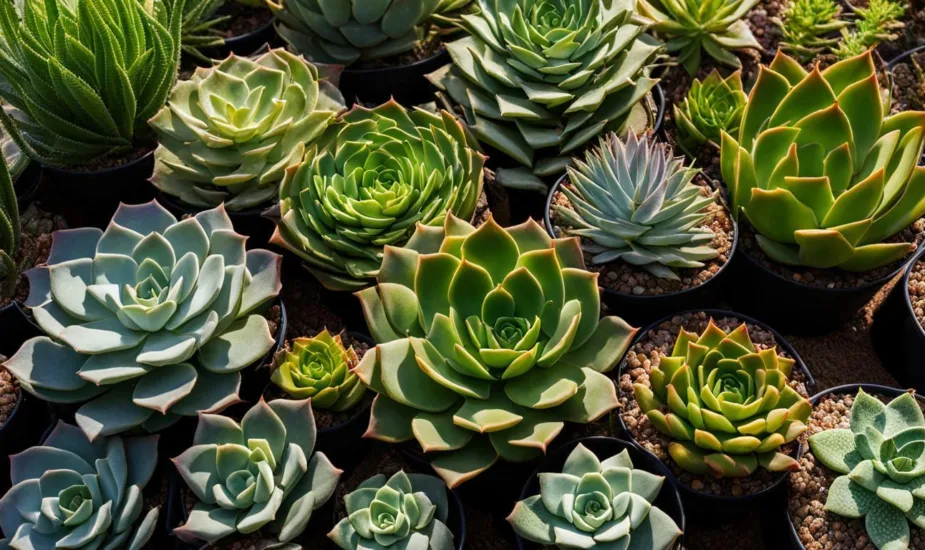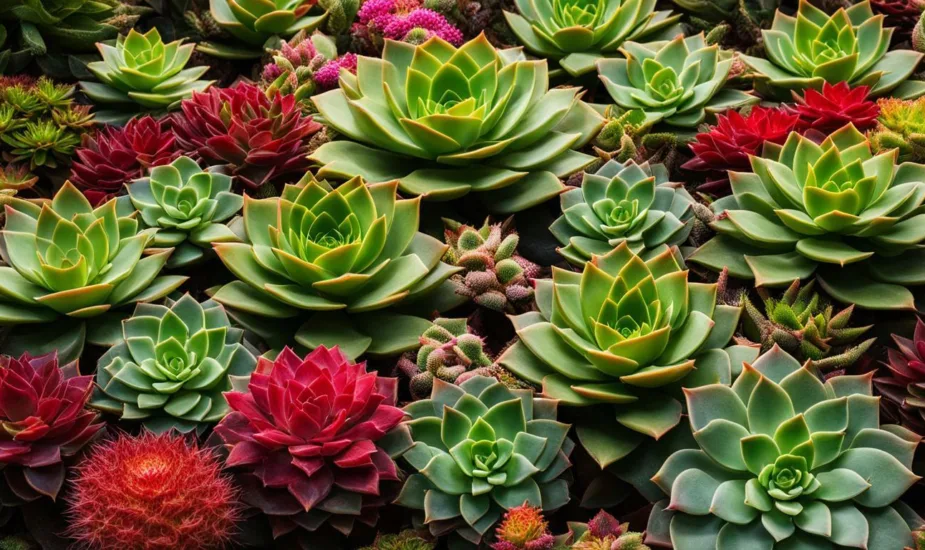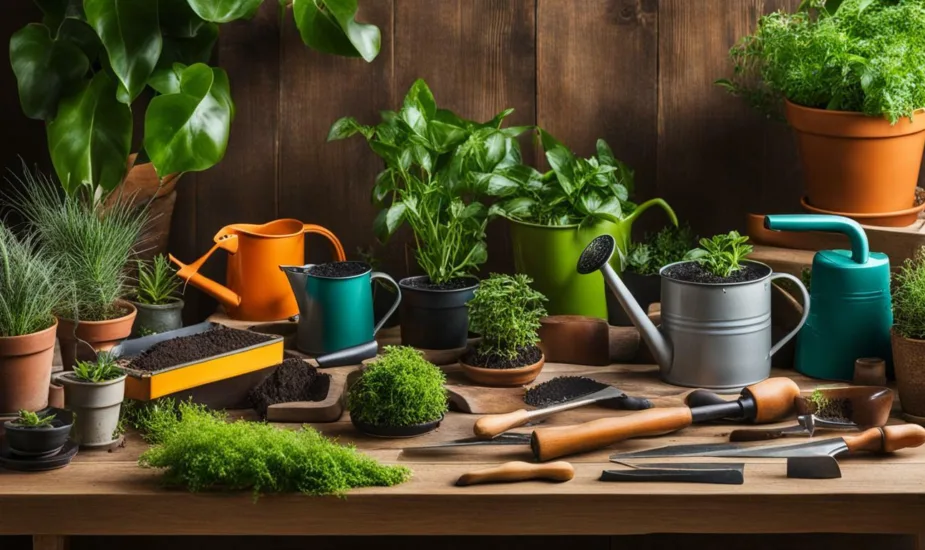Growing Self Sufficient Plants at Home
Discover how to cultivate self sufficient plants for an easy-care garden that thrives with minimal upkeep. Perfect for busy plant lovers!

As a child, I always marveled at my grandmother’s lush backyard garden. It was a vibrant oasis filled with self-sufficient plants that seemed to flourish effortlessly. No matter the weather, those plants stood strong and resilient, providing our family with a bounty of fresh produce year after year.
One day, as I admired the colorful array of vegetables and herbs, my grandmother turned to me with a smile and said, “These are my little independent warriors. They don’t need much care, yet they give so much in return.” That moment sparked my fascination with low-maintenance plants that can thrive with minimal intervention.
Over the years, I’ve discovered the secret to cultivating a self-sufficient garden: choosing easy-care plants that are drought-tolerant, self-sustaining, and resilient. These hardy plants require minimal upkeep and have the remarkable ability to adapt to their environment, providing a sustainable source of nourishment and beauty.
Whether you have limited gardening experience or a busy schedule, growing self-sufficient plants at home is within your reach. In this article, we will explore the importance of cultivating a self-sufficient garden, the best plants for beginners, setting up a sustainable garden, maintaining your garden with minimal upkeep, harvesting and preserving your bounty, advanced strategies for a self-reliant garden, and the benefits and satisfaction of growing your own food.
Join me on this journey of self-sufficiency and discover the joy of nurturing plants that are truly independent.
Key Takeaways:
- Cultivating self-sufficient plants at home provides a constant supply of fresh produce.
- Choosing low-maintenance, hardy plants ensures minimal upkeep and resilience.
- Self-sufficient plants are drought-tolerant and self-sustaining, reducing the need for frequent watering and care.
- By cultivating a self-sufficient garden, you can reduce your dependence on grocery stores and save money.
- Growing your own food is not only rewarding but also promotes sustainability and self-reliance.
The Importance of Cultivating a Self-Sufficient Garden
Cultivating a self-sufficient garden is crucial for ensuring food security in uncertain times. Home gardening empowers individuals to take control of their own food supply, reducing the risk of potential food shortages and disruptions in the supply chain. By growing their own food, people can become less dependent on grocery stores and gain access to fresh, nutritious produce right at their doorstep.
Understanding Food Security Through Home Gardening
Food security refers to the availability, accessibility, and utilization of food that ensures individuals have access to an adequate, nutritious diet. Cultivating a self-sufficient garden at home plays a significant role in achieving food security. By growing a variety of fruits, vegetables, and herbs, individuals can diversify their diet and have a constant supply of fresh, healthy food. Additionally, home gardening promotes sustainability and reduces the carbon footprint associated with the transportation of food from afar.
Benefits of Reducing Dependence on Grocery Stores
Reducing dependence on grocery stores has numerous benefits for individuals and communities. Firstly, it allows individuals to have more control over the quality and safety of the food they consume. By growing their own food, they can avoid pesticides and other harmful chemicals that may be present in store-bought produce. Secondly, it saves money in the long run as home-grown food is more cost-effective compared to store-bought options. Thirdly, it promotes self-sufficiency and resilience, empowering individuals to rely less on external sources for their essential needs.
Reviving the Legacy of Victory Gardens
The concept of victory gardens originated during World Wars I and II, where people were encouraged to grow their own food to support the war effort and ensure food security for themselves and their communities. By reviving the legacy of victory gardens today, we can foster a sense of self-reliance and community resilience. Victory gardens not only provide a sustainable solution to food security but also promote a sense of pride and accomplishment in contributing to the well-being of oneself and others.
Self Sufficient Plants for Beginners
For beginners, it’s important to start with self-sufficient plants that are easy to care for and require minimal maintenance. These plants are perfect for those who are new to gardening and want to cultivate a self-sufficient garden without overwhelming themselves. By choosing the right plants, beginners can gain confidence and gradually expand their gardening skills.
Some ideal choices for self-sufficient plants include:
- Tomatoes: These versatile plants can be grown in containers or in the ground with proper support. They are relatively easy to grow and provide a bountiful harvest.
- Spinach: Spinach is a nutrient-rich leafy green that thrives in cool weather. It can be grown in both containers and garden beds.
- Herbs like basil and mint: Herbs are low maintenance and can be grown in small containers or as part of a garden bed. They add flavor to meals and are a great starting point for beginners.
- Salad greens like lettuce and kale: Lettuce and kale are easy to grow and can be harvested multiple times. They are excellent additions to any self-sufficient garden.
These plants are known for their resilience, adaptability, and ability to grow well in most environments. They require minimal care and provide a good yield, making them perfect choices for beginner gardeners. By starting with these self-sufficient plants, beginners can build their gardening skills and eventually expand their garden to include more varieties.
As beginners gain experience and confidence, they can experiment with more plant varieties and explore advanced gardening techniques. The key is to start small and gradually expand, allowing for a successful and enjoyable gardening journey.
Setting Up Your Sustainable Garden

When it comes to creating a sustainable garden, there are a few key factors to consider. In this section, I will guide you through choosing the right location, designing a garden layout for maximum yield, and incorporating indigenous plants for easier growth.
Choosing the Right Location with Adequate Sunlight
One of the most important aspects of setting up a sustainable garden is choosing the right location. Most plants require at least six hours of direct sunlight to thrive, so it’s essential to find a spot in your yard that receives ample sunlight throughout the day. Take some time to observe the sunlight patterns in your yard and identify the areas that have the most exposure. This will ensure that your plants have the energy they need to grow and produce a bountiful harvest.
Designing a Garden Layout for Maximum Yield
Once you have determined the best location, it’s time to design a garden layout that will maximize your yield. Consider the space you have available and plan accordingly. Utilize techniques such as raised beds, vertical gardening, and intercropping to make the most of your space. Companion planting is another effective strategy to incorporate into your garden layout. By pairing compatible plants together, you can enhance their growth and deter pests naturally.
Incorporating Indigenous Plants for Easier Growth
When selecting plants for your sustainable garden, consider incorporating indigenous plants that are well-adapted to your local climate and conditions. Indigenous plants have evolved to thrive in your specific ecosystem, making them more resilient and requiring less maintenance. Additionally, they provide valuable habitat and support for local wildlife. Research native plants in your area and include them in your garden to promote biodiversity and easier growth.
| Key Considerations for Setting Up Your Sustainable Garden | Benefits |
|---|---|
| Choosing the right location with adequate sunlight | – Ensures plants receive the necessary energy to thrive – Maximizes plant productivity and yield |
| Designing a garden layout for maximum yield | – Optimizes space utilization in your garden – Enhances plant growth through companion planting |
| Incorporating indigenous plants for easier growth | – Increases garden resilience and reduces maintenance – Promotes biodiversity and supports local ecosystems |
Maintaining Your Garden with Minimal Upkeep

Maintaining a self-sufficient garden doesn’t have to be time-consuming or labor-intensive. By implementing strategies like mulching, proper watering techniques, and weed control, you can keep garden maintenance to a minimum. Choosing low-maintenance plants, using organic fertilizers, and practicing integrated pest management can also help reduce the need for frequent maintenance tasks.
Mulching: Mulching is a simple yet effective technique that helps conserve moisture, suppress weeds, and regulate soil temperature. Apply a layer of organic mulch, such as wood chips or straw, around your plants to retain moisture and prevent weed growth. This will not only save you time and effort in watering and weeding but also improve the overall health of your garden.
Proper watering techniques: Water your plants deeply and less frequently to encourage deep root growth and drought resistance. Use a drip irrigation system or soaker hose to deliver water directly to the plant’s roots, minimizing evaporation and runoff. Avoid overhead watering, as it can lead to disease and water wastage.
Weed control: Regular weeding is essential to prevent weeds from competing with your plants for nutrients and water. Make it a habit to remove weeds as soon as you spot them. Additionally, using mulch as mentioned earlier can effectively suppress weed growth and reduce the need for manual weeding.
Choosing low-maintenance plants: Selecting plants that are naturally resilient and require minimal care is key to maintaining a low-maintenance garden. Look for varieties labeled as “low maintenance,” “drought-tolerant,” or “easy care.” These plants are typically hardy and can withstand fluctuations in weather and environmental conditions.
Using organic fertilizers: Organic fertilizers, such as compost and well-rotted manure, provide slow-release nutrients to the soil, promoting healthy plant growth without the risk of chemical buildup. They also improve soil structure and fertility over time. Incorporating organic fertilizers into your gardening routine will reduce the need for frequent applications and help minimize maintenance tasks.
Integrated pest management: Implementing an integrated pest management (IPM) approach allows you to control pests without relying heavily on chemical pesticides. Encourage natural predators and beneficial insects, such as ladybugs and lacewings, to visit your garden by providing habitat and avoiding the use of broad-spectrum pesticides. Regularly monitor your plants for signs of pest damage and take appropriate action, such as handpicking pests or using organic pest control methods.
| Strategy | Benefits |
|---|---|
| Mulching | Conserves moisture, suppresses weeds, regulates soil temperature |
| Proper watering techniques | Promotes deep root growth, saves water, prevents diseases |
| Weed control | Prevents weed competition, reduces manual weeding |
| Choosing low-maintenance plants | Requires minimal care, withstands environmental conditions |
| Using organic fertilizers | Provides slow-release nutrients, improves soil fertility |
| Integrated pest management | Controls pests without heavy reliance on pesticides |
Harvesting and Preserving Your Bounty

Harvesting your garden bounty at the right time is crucial for optimal flavor and nutritional value. Knowing the best practices for harvest timing ensures that you enjoy the fruits of your labor when they are at their peak.
When it comes to preserving your harvest, there are various techniques you can employ to ensure a year-round food supply. Canning, freezing, and drying are popular methods that help extend the shelf life of your produce. Canning involves sealing your harvest in jars, while freezing and drying involve removing moisture to prevent spoilage.
One creative way to make the most of your harvest is by using it in a variety of meals. From fresh salads to hearty soups and flavorful sauces, your harvest can add color, nutrition, and taste to your dishes. Experiment with different recipes and flavors to explore the full potential of your home-grown produce.
Advanced Strategies for a Self-Reliant Garden

To truly achieve a self-sufficient garden, advanced strategies can be implemented. These techniques will bring your garden to the next level and enhance your ability to produce a continuous supply of fresh produce. By incorporating these advanced strategies, you can further minimize external inputs and become more self-reliant in your gardening practices.
Successive Sowing to Ensure Continuous Harvest
Successive sowing is a key technique for maintaining a continuous harvest throughout the growing season. This method involves planting crops at different intervals to stagger their maturity dates. By doing so, you can enjoy a steady supply of vegetables and prevent a glut of produce all at once. For example, instead of planting an entire row of lettuce at once, space out your plantings every two weeks. This way, you’ll have a constant rotation of young, tender lettuce to harvest.
Seed Saving and Heirloom Cultivation
Preserving genetic diversity in your garden is crucial for a self-sustaining ecosystem. One way to accomplish this is through seed saving and heirloom cultivation. Save seeds from your best-performing plants to ensure the continuation of desirable traits. Heirloom varieties, which have been passed down through generations, are particularly valuable for preserving unique flavors and characteristics. By saving and replanting your own seeds, you become less reliant on purchasing new seeds each year.
Composting and Natural Soil Enrichment Techniques
A healthy garden starts with healthy soil. Composting and natural soil enrichment techniques are essential for promoting long-term fertility and reducing the need for synthetic fertilizers. Composting allows you to recycle kitchen scraps, yard waste, and other organic materials into nutrient-rich compost. This compost can then be used to improve soil structure and fertility, providing essential nutrients for your plants. Additionally, incorporating natural soil amendments like composted manure, bone meal, or seaweed can further enrich the soil and enhance plant growth.
By incorporating these advanced strategies into your gardening practices, you can create a more self-reliant and sustainable garden. Successive sowing ensures a continuous harvest, seed saving and heirloom cultivation preserve genetic diversity, and composting and natural soil enrichment techniques promote healthy soil. These strategies empower you to become more self-sufficient and minimize external inputs in your garden, allowing you to reap the rewards of a thriving and abundant self-reliant garden.
Conclusion
Cultivating self-sufficient plants at home offers a wealth of benefits. It ensures food security, reduces dependence on grocery stores, and provides the satisfaction of growing one’s own food. By starting with beginner-friendly self-sufficient plants, setting up a sustainable garden, maintaining it with minimal upkeep, and implementing advanced strategies, individuals can achieve a self-reliant garden that consistently supplies fresh produce.
Embracing self-sufficiency in gardening not only promotes sustainability but also empowers individuals to take control of their food supply. By growing their own fruits, vegetables, and herbs, people can contribute to a more resilient and sustainable future. Additionally, the joy and sense of accomplishment that come from cultivating a self-sufficient garden are unparalleled, providing a fulfilling experience for gardeners of all skill levels.
So why wait? Start your self-sufficient garden journey today. Explore the best plants for beginners, design a sustainable garden layout, and incorporate advanced techniques like successive sowing and seed saving. By doing so, you’ll discover the immense rewards of self-sufficiency and gain a deeper connection with nature, all while enjoying a constant supply of fresh and nutritious produce right at your doorstep.
FAQ
What are the benefits of growing self-sufficient plants at home?
Growing self-sufficient plants at home provides numerous benefits, including food security, reduced dependence on grocery stores, and the satisfaction of growing your own food.
Why is cultivating a self-sufficient garden important?
Cultivating a self-sufficient garden is essential for ensuring food security. It allows individuals to have direct control over their food supply, reducing the risk of food shortages and disruptions in the supply chain.
What are some self-sufficient plants for beginners?
Ideal self-sufficient plants for beginners include tomatoes, spinach, herbs like basil and mint, and salad greens like lettuce and kale. These plants are easy to care for and require minimal maintenance.
How do I set up a sustainable garden?
To set up a sustainable garden, choose a location with adequate sunlight, design a layout for maximum yield, and consider incorporating indigenous plants that are well-adapted to the local climate and conditions.
How can I maintain my garden with minimal upkeep?
Maintaining your garden with minimal upkeep involves strategies like mulching, proper watering techniques, weed control, choosing low-maintenance plants, using organic fertilizers, and practicing integrated pest management.
What are the best practices for harvesting and preserving my garden bounty?
It’s important to harvest your garden bounty at the right time for optimal flavor and nutrition. You can preserve your harvest through canning, freezing, drying, and find creative ways to use it in meals.
What are some advanced strategies for a self-reliant garden?
Advanced strategies for a self-reliant garden include successive sowing for continuous harvest, seed saving and heirloom cultivation for genetic diversity, and composting and natural soil enrichment techniques to promote healthy soil.
 Little Garden Tips
Little Garden Tips

